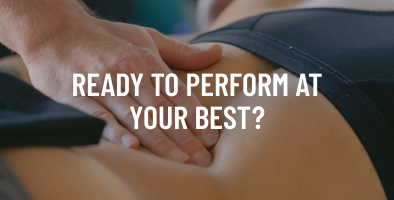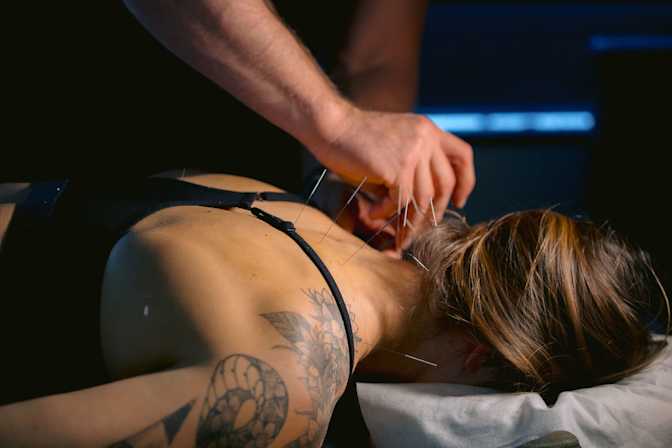
What Is Sports Medicine Acupuncture®?
Sports Medicine Acupuncture® is an integrative approach of assessment and treatment that incorporates principles and techniques of both Traditional Chinese Medicine and Sports Medicine. The system was originally developed by Matt Callison nearly 30 years ago and has been evolving ever since.

Every successful treatment starts with a proper assessment. Being equal parts Chinese Medicine and Sports Medicine our toolbox includes several different techniques and approaches to identify, specifically, what is not working correctly so that we can then fix it.
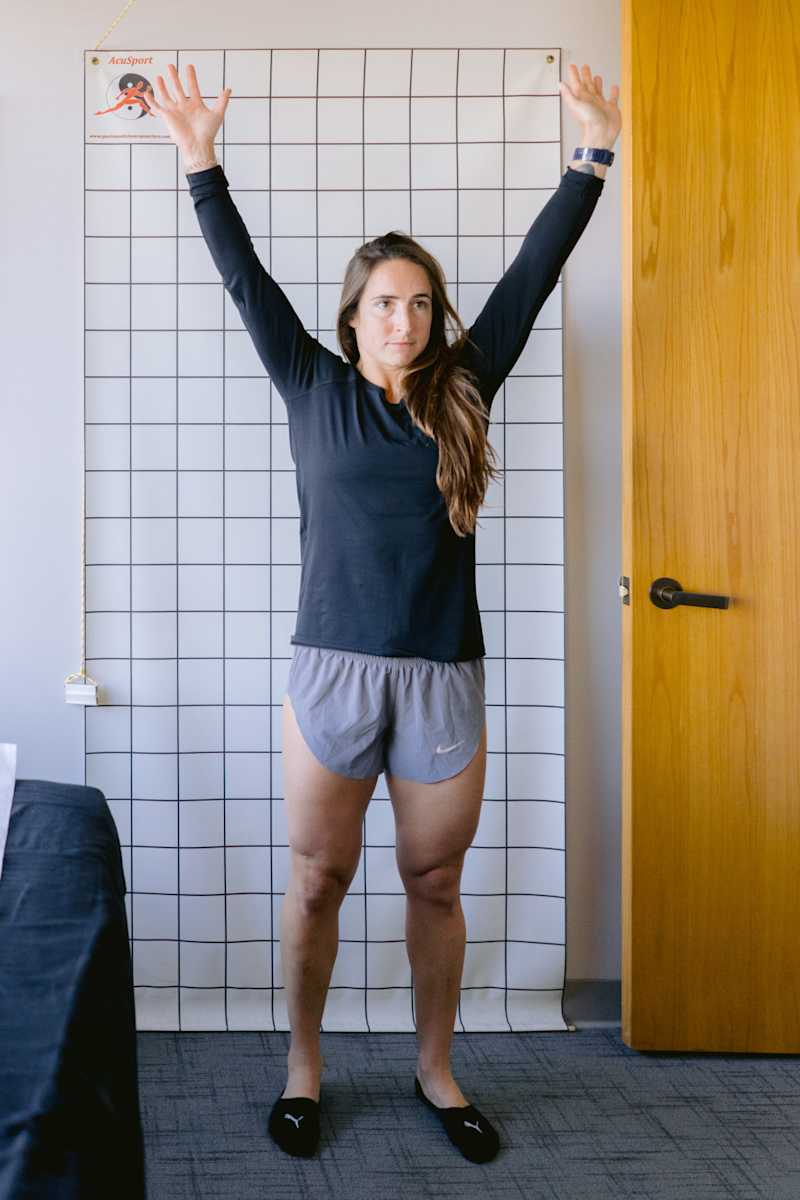
Here, Ryan is getting ready to perform a functional overhead squat assessment. This technique is great for identifying muscle imbalances that lead to improper movement patterns during dynamic movements. We can also use the postural grid behind her and other tools to precisely measure static postural imbalances.
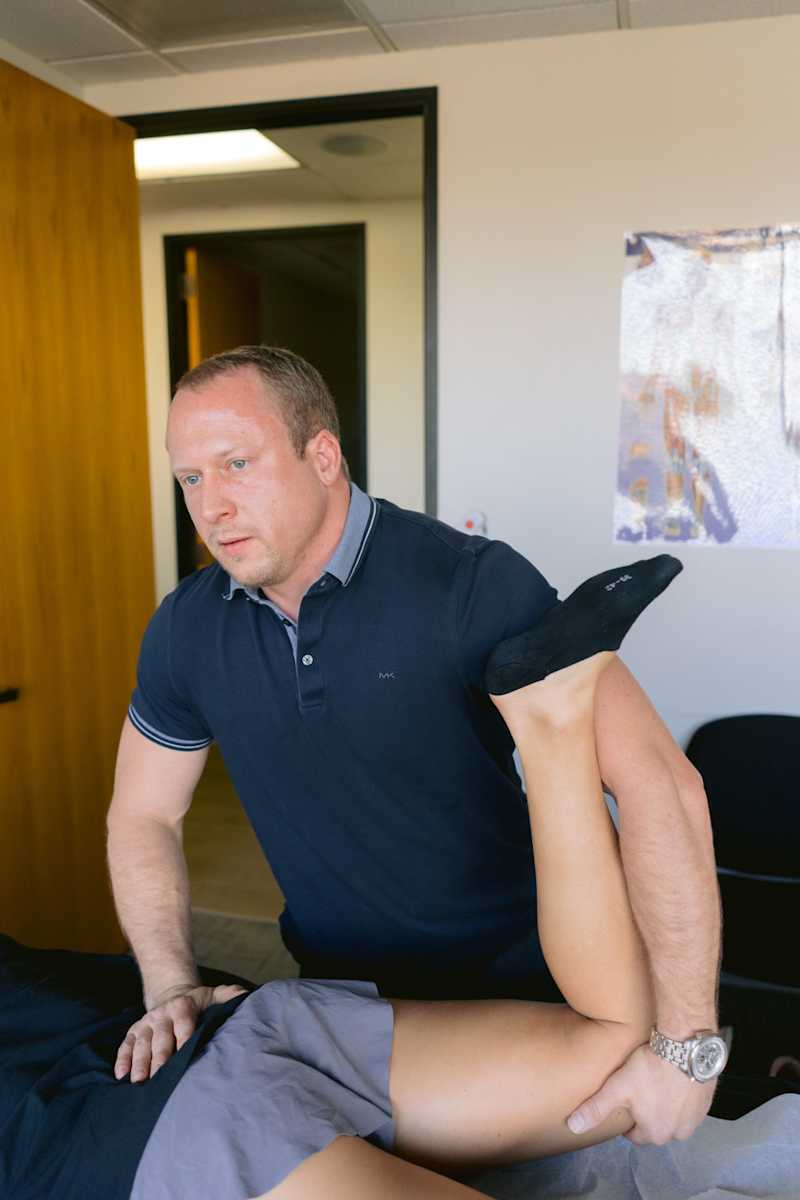
Here I am performing Yeoman’s test. This is just one of many orthopedic tests we will use to help form a differential diagnosis. Ryan is a former high level rugby player who has retired from her sport and switched to Olympic weightlifting. She trains hard and she’s beginning to develop some low back pain. I’m using this test to try to determine what exactly is causing that low back pain so we can know what approach will work best for her specific condition.
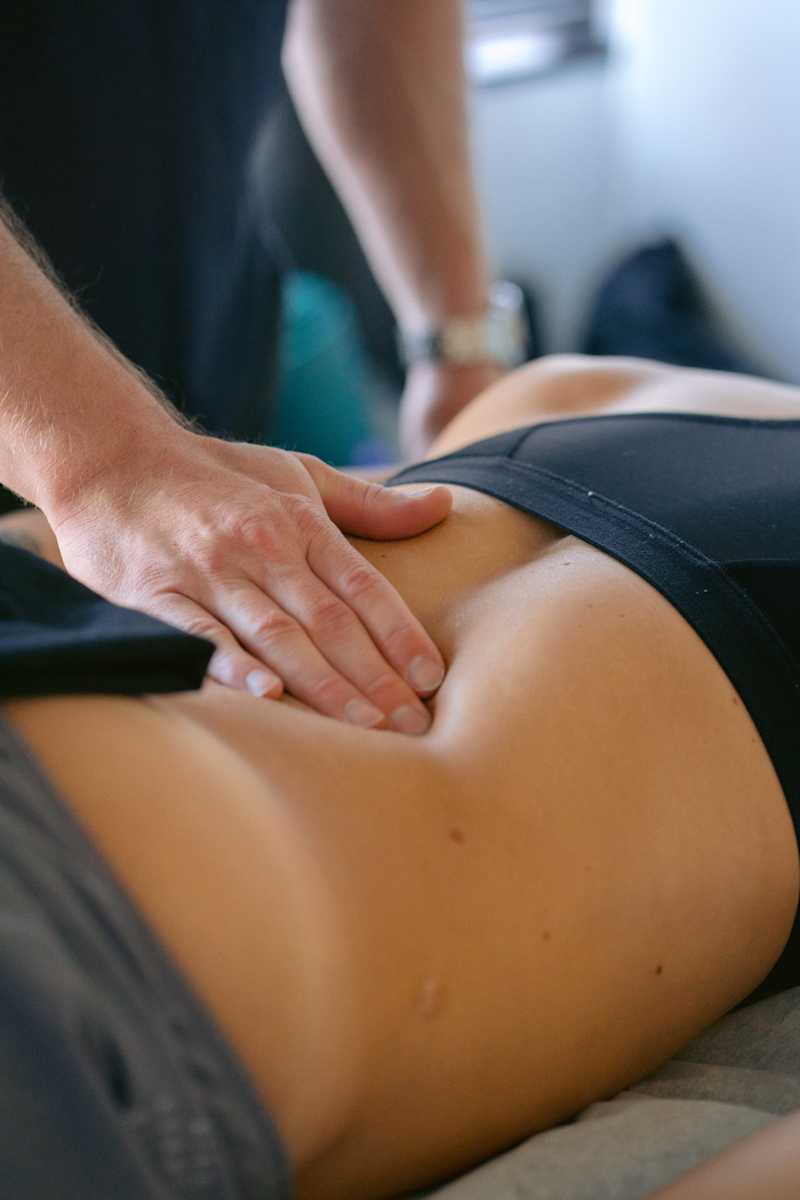
Palpation is one of the cornerstones of a successful treatment. Sports Medicine Acupuncture® is a unique approach that involves the needling of muscle motor points. A motor point is where the muscle is innervated by the spinal cord and it’s where the muscle is most electrically charged. When the motor point is stimulated by an acupuncture needle the electricity is discharged and the muscle returns to a neutral position. Whether the muscle was overly activated or overly inhibited before it now functions correctly again. With practice, palpation allows us to feel the motor points that are hidden in each muscle.

This is a fairly normal looking low back treatment. Here you can see points being used to help adjust the tilt and symmetry of her hips, reduce the tightness and tension of her low back, and also to reduce inflammation. Ryan’s assessment led me to believe she was experiencing inflammation of her lumbar facet joints. The needle I’m currently inserting in the picture is to reduce inflammation in her L4 lumbar facet.

Soft tissue release is another very common tool used during a Sports Medicine Acupuncture® treatment. While working on Ryan I happened to notice her forearms were very tight, a common issue with weightlifters. In this particular style of soft tissue work I’m having Ryan move her wrist through flexion and extension as I gently, but firmly dredge the flexor muscles of her forearm. This technique is sometimes called “pin and stretch” and it’s just one of many soft tissue techniques we use.
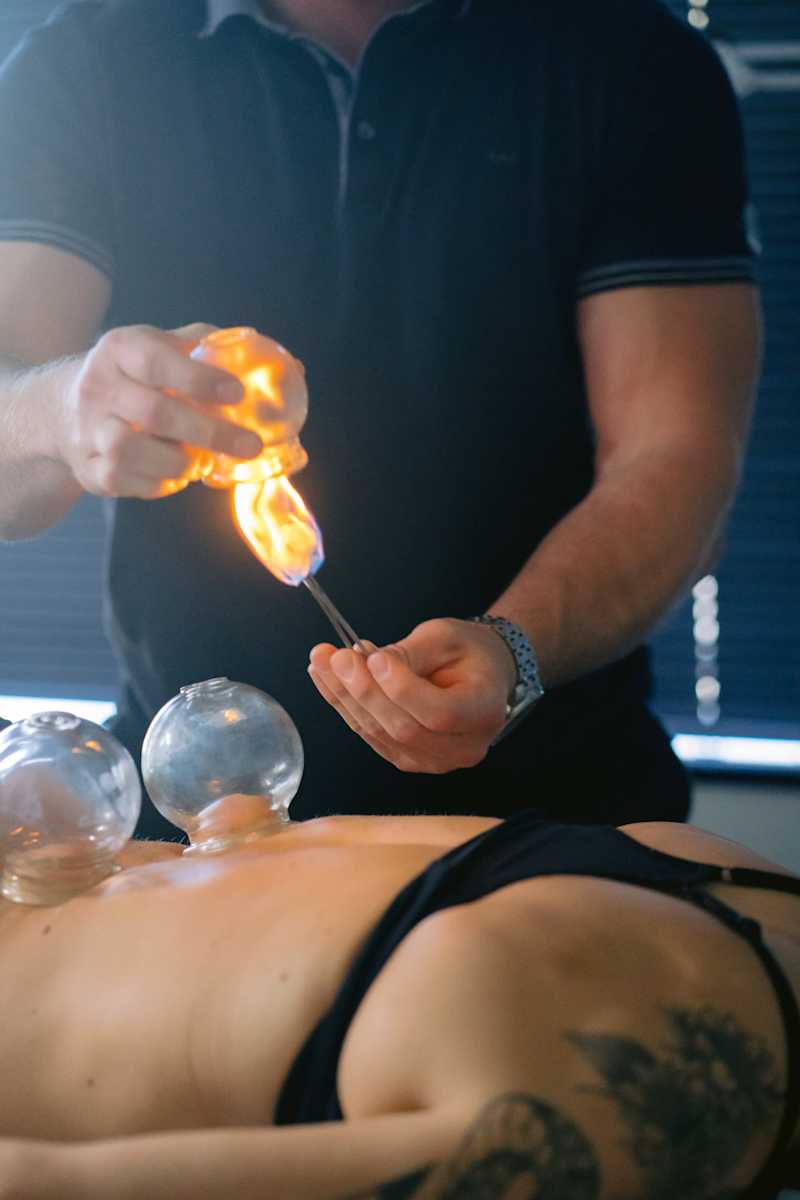
Cupping is another common modality we use. I prefer to put down a layer of massage cream and then apply glass cups using the traditional “fire cupping” technique. Once the cups are in position I can slide them all across the tight tissue to break up fascial adhesions and allow the muscles to move freely.
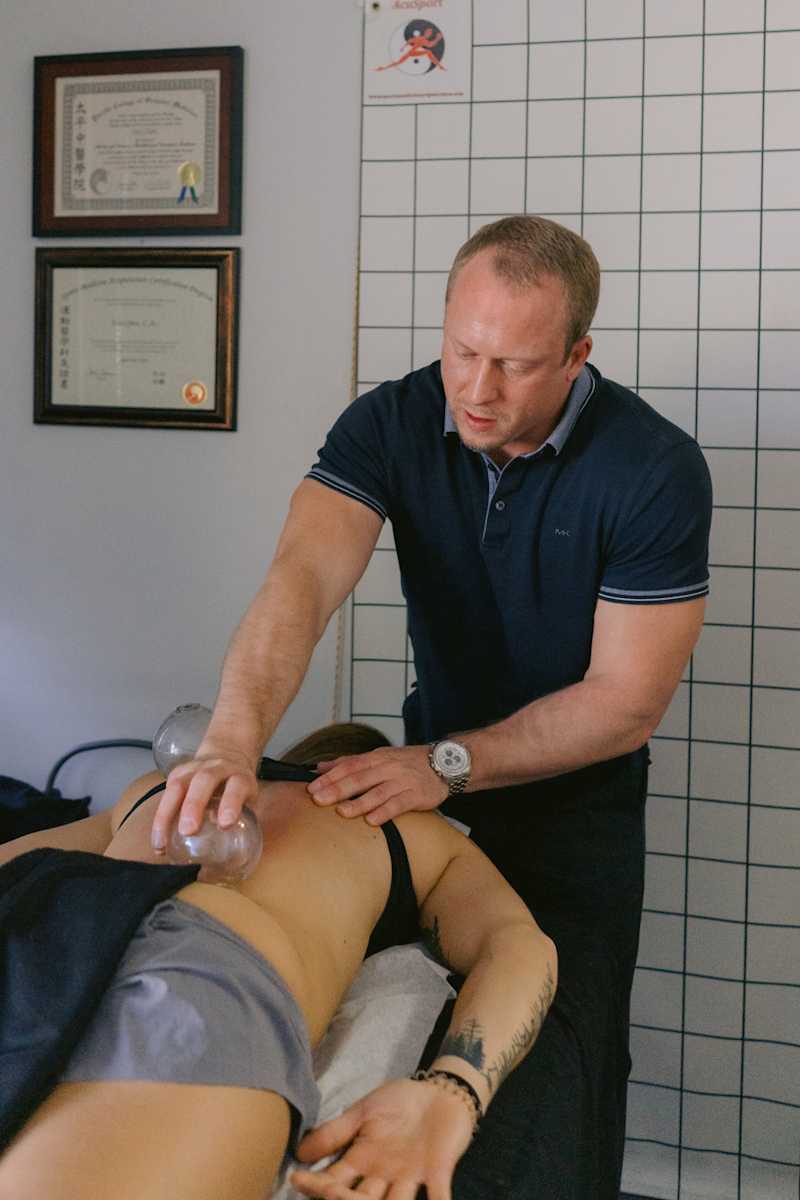
Glass cups create the most suction, so that’s what I use on the back, but I also have gentler silicone cups that I’ll use when working in tighter spaces, like with biceps tendinopathy.
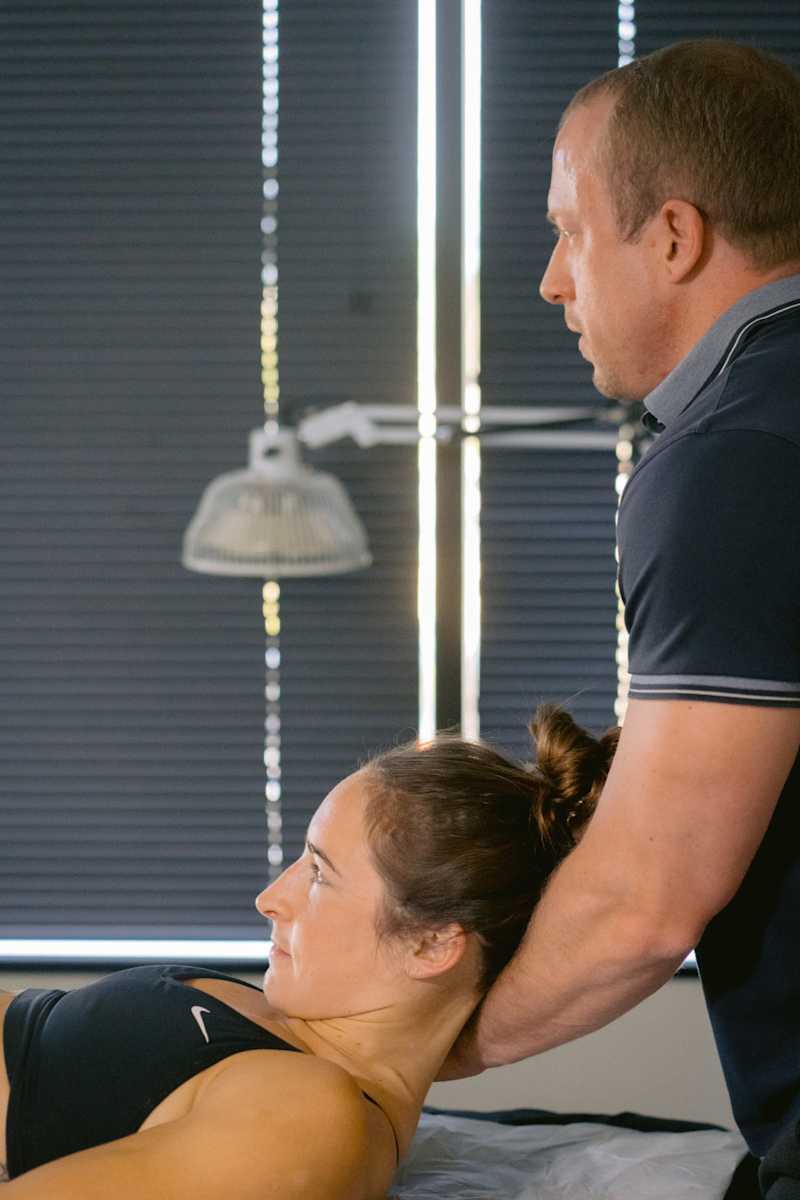
After resetting the tight muscles with acupuncture I like to perform stretching exercises to help restore the muscles to their full range of motion. I will typically do multiple stretches for each area of the body, including both the muscles we worked on and the muscles that move in the opposite direction to those.
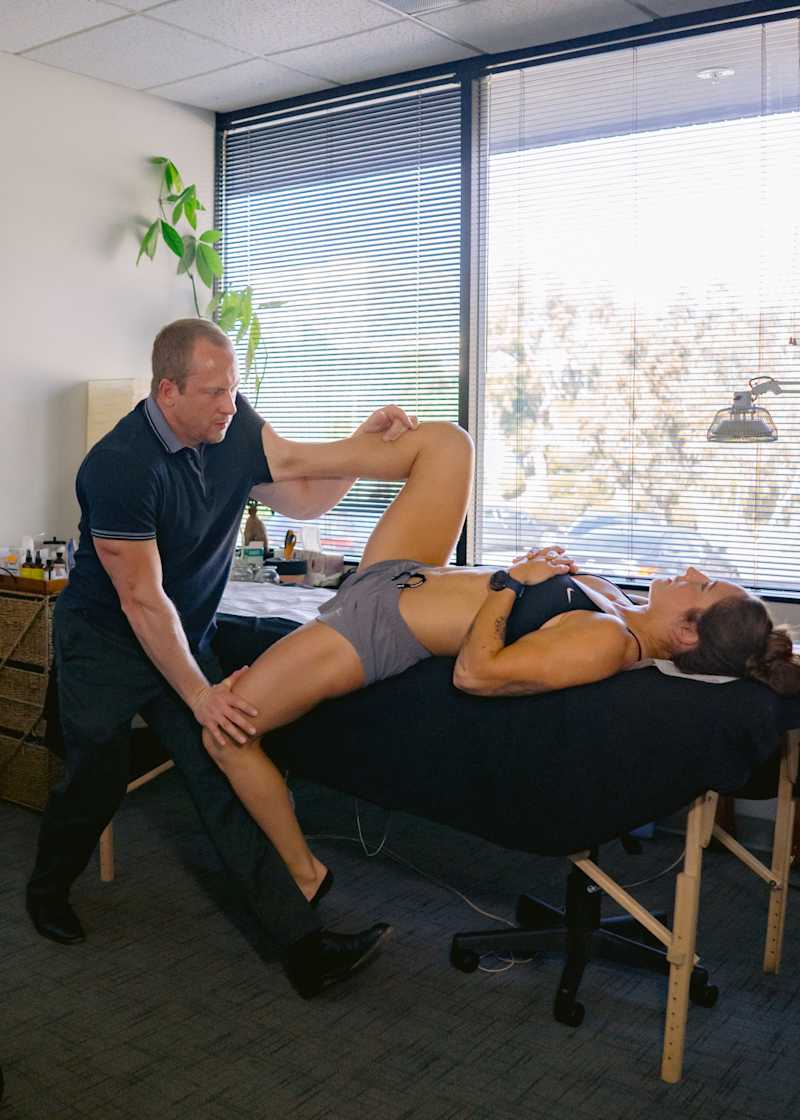
The iliopsoas stretch is by far one of the most important stretches for chronic low back pain in modern society. The iliopsoas (commonly referred to as the psoas) becomes tight when we’re stuck in a sitting position for too long and it can lead to an achy low back. Here you can see I’m using my leg to stretch Ryan’s quad while I’m also performing the psoas stretch.
I hope this sample of what a Sports Medicine Acupuncture® treatment looks like has helped to demystify what it is we do. This is not an exhaustive list of every tool and technique we have to offer in a treatment, but it is a fairly normal looking treatment. Other common techniques we employ include kinesiotaping® and Postural Assessment Corrective Exercises (PACE) among others. Every treatment is custom tailored to your specific needs on that particular day.
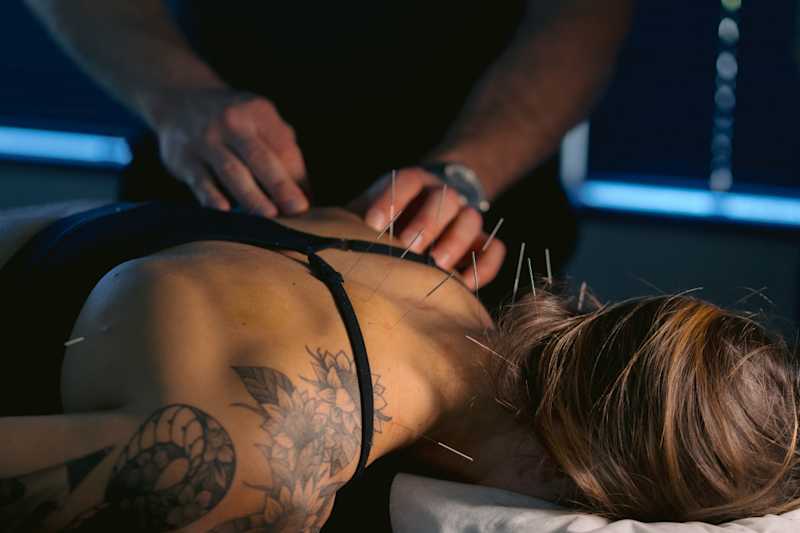
More Articles


